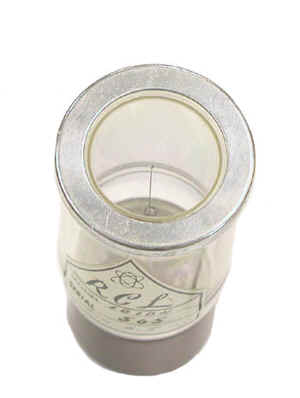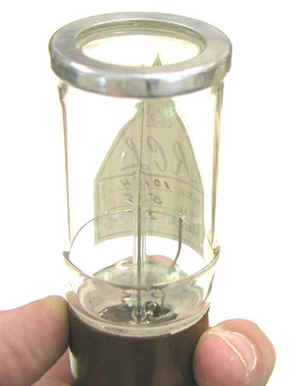RCL End Window GMs, Models 10104, 10105 and 10106 (ca. late 1950s)

Manufactured with pride by Radiation Counter Laboratories Inc. of Skokie, Illinois: “Each detector carries the RCL warranty for dependability, your assurance that the finest materials and workmanship are used to manufacture field proven designs.” While the Models 10104 and 10105 were probably produced in the late 1950s, the Model 10106 came with a Certificate of Examination that was dated 7-20-60.
The accompanying photo shows three models of RCL end window GMs. From left to right: the Model 10104 with window thickness between 1.1 to 1.4 mg/cm² (end window protected by red cap), the Model 10405 with window thickness of 1.5 to 2.0 mg/cm² and the Model 10106 with window thickness of 2.1 to 4.0 mg/cm². At least that was what the manufacturer said was supposed to be the case. The exact thickness of the windows, as measured by RCL, is indicated on the labels—as can be seen in the photo, they don't always fall in the thickness range specified for the model.


The photograph above left shows the end of the anode (with a small glass sphere at the tip) as seen through the transparent end window. These windows were 1” in diameter and made from Indian Ruby Mica. The photograph above right shows the connection to the cathode, a circular wire running around the lower inside portion of the tube. The cathode itself is an invisible deposit of tin oxide on the inside surface of the glass.
The tubes used an RCL patented halogen quenching gas (U.S. Patent 3019363). Since halogen quenched tubes could recover more easily from overvoltages than organic quenched tubes, RCL described them as “student proof.”
Operating voltage: 1300 volts
Dead time: 200 us
Background: 22 cpm
Size: 4” long
Wall thickness: > 300 mg/cm²
Outside diameter: 1.625”
Reference
RCL brochure. Radiation Detectors. No date.
